A road trip is an adventure and when it comes to deciding the details of your departure point and your destination, you are likely to take into account your main interests and how they might be satisfied by a particular journey. Texas is a vast state with Houston one of its main cities. New Orleans in Louisiana is quite a contrast, a city on the Mississippi that is famous for its range of music, blues, jazz, rock and even country. It was first settled by the French in the early 18th century and ceded to the Spanish half a century later. Today, its culture and cuisine reflect its history; a fascinating place.
Of the two route options to take between Houston and New Orleans, the one that heads inland and then makes its way east is the most interesting. The distance between the two cities can be done in a day, but that is hardly an adventure. The total distance of 460 miles (736 km) so there is no time pressure to reach your destination so decide how much time you have, and start planning. You may not use all the ideas mentioned below but you will certainly enjoy your time on the road.
Both alternatives include Baton Rouge, which is one of the places to stay at least one night. The journey includes some historic sites, forests and preserves as well as important towns and cities. With so much in New Orleans to see, you should plan to spend two or three days in that final destination so the road trip should take that into account when you start your planning. If you have two weeks, your drive can almost meander but if you only have a week, you should plan your five-day road trip to include some of these detours away from the direct route to take in sites that may interest you. Here are some places to visit on a Houston to New Orleans road trip.
Contents
- Houston to New Orleans
- 20 Places To Visit On A Houston To New Orleans Road Trip
- 1- Houston, Texas
- 2- Space Center, Texas
- 3- San Jacinto Battleground State Historic Site, Texas
- 4- Port Arthur, Texas
- 5- Sea Rim State Park, Texas
- 6- Beaumont, Texas
- 7- Big Thicket National Preserve, Texas
- 8- Lake Charles, Louisiana
- 9- Sam Houston Jones State Park, Louisiana
- 10- Sabine National Wildlife Refuge, Louisiana
- 11- Lafayette, Louisiana
- 12- Rockefeller Wildlife Refuge, Louisiana
- 13- Atchafalaya National Wildlife Refuge, Louisiana
- 14- Baton Rouge, Louisiana
- 15- Gonzales, Louisiana
- 16- Oak Alley Plantation, Louisiana
- 17- Fontainebleau State Park, Louisiana
- 18- Mandeville, Louisiana
- 19- Mississippi Steamer, New Orleans
- 20- Jackson Square, New Orleans
Houston to New Orleans
Top Tours
- Space Center Houston Admission Ticket – must do!
- Houston CityPASS – save money in the big city.
- The Best of Houston Self-Guided Driving Audio Tour – explore Houston and beyond on your own.
- City Sightseeing Hop-On Hop-Off Bus Tour – an easy way to explore New Orleans.
- Steamboat Natchez Evening Jazz Cruise with Dinner Option – an iconic experience not to be missed.
20 Places To Visit On A Houston To New Orleans Road Trip
1- Houston, Texas
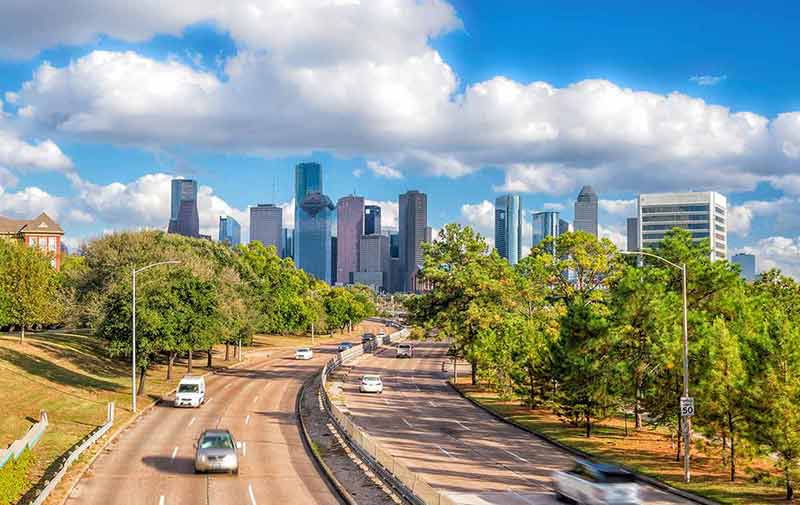
Houston is one of the largest cities in the USA and certainly the largest in the south.
Its population has grown steadily over the decades due to the prosperity achieved from oil and gas, among other things.
It is located close to Galveston Bay and the Gulf of Mexico.
It has grown on what was once flat marshland and is now a museum lovers’ paradise while there is still the chance to watch a rodeo.
Once you are ready to leave, start your road trip at the Historic Market Square, which is quite a contrast to the skyscrapers that dominate the city.
Save money with the Houston CityPASS.
2- Space Center, Texas
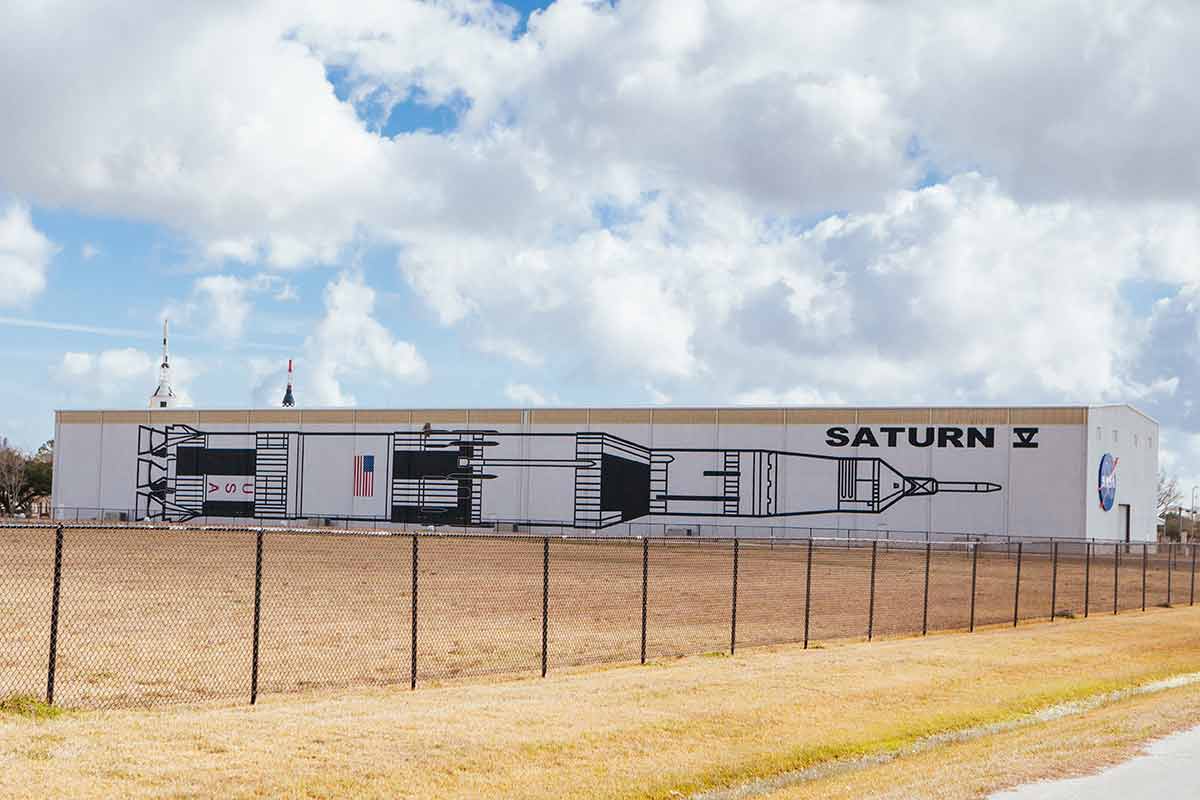
Before leaving Houston, you should take the half-hour trip down to the Space Center and back.
This science museum is the visitor centre for the NASA Johnson Space Center, which runs the national space programme.
You can see space capsules that have journeyed into outer space including Mercury 9, Apollo 17 and Gemini 5.
The display of moon rocks is also a “must” while you are there, and there is one you can touch.
Skip the line and reserve your tickets here.
3- San Jacinto Battleground State Historic Site, Texas
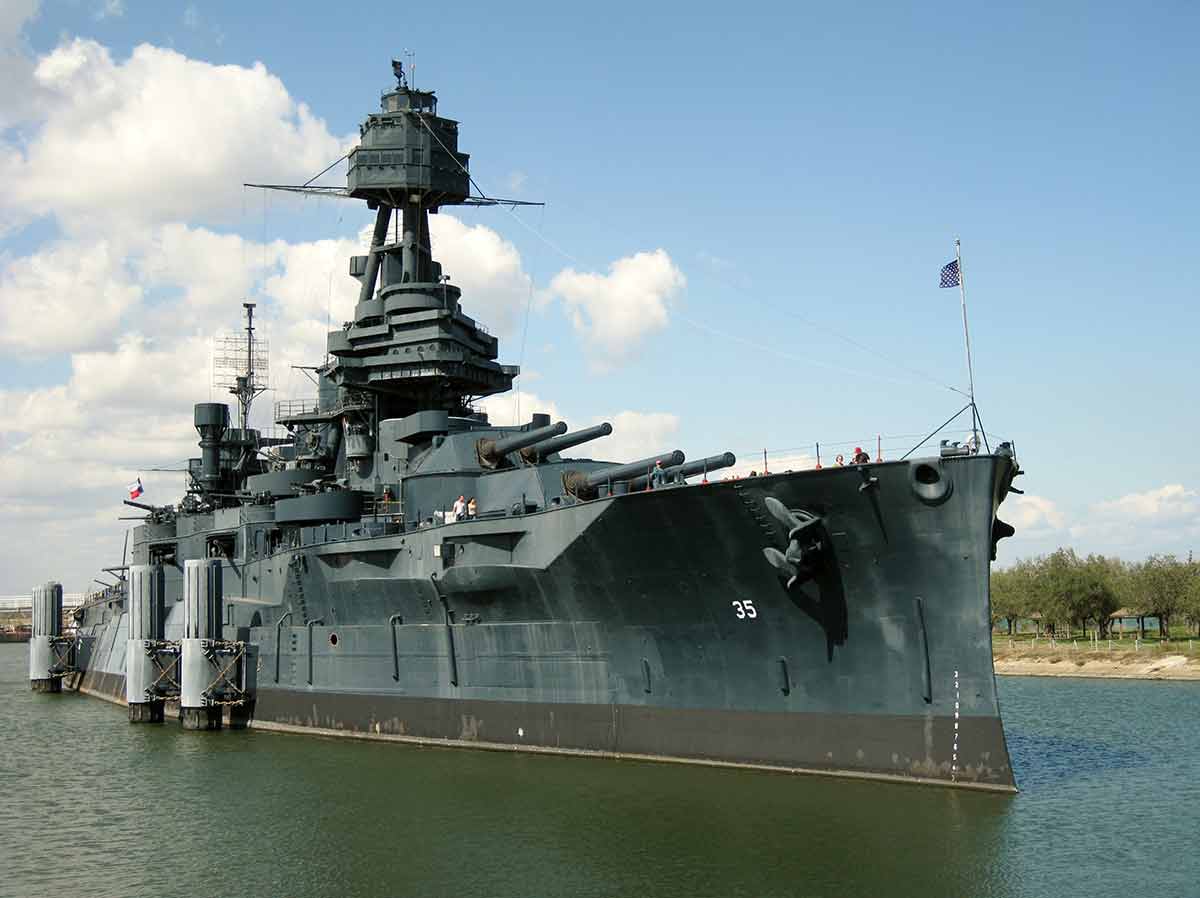
The San Jacinto Monument stands at 567 feet (173 m) on the Houston Ship Channel just a short distance from Houston.
The star on the top weighs 220 tonnes, the star being the symbol of the “Lone Star State.”.
The site is where the Battle of San Jacinto was fought in 1836 during the Texas Revolution with the Texan victory over the Mexicans being decisive.
There is an elevator to an observation deck where there are incredible panoramas.
The San Jacinto Museum of History is inside the base of the monument and tells the story of the battle with plenty also on Texas culture and heritage.
The San Jacinto Battlefield is a National Historic Landmark and is included in the National Register of Historic Places.
Distance from Houston Space Center: 20 miles (32 km).
Driving time: 26 minutes.
4- Port Arthur, Texas
The largest oil refinery in the USA is in Port Arthur whose development is largely because of the oil and gas industry.
The city became a seaport at the end of the 19th Century after many setbacks through that century.
It has been susceptible to hurricanes over the years, some being the reason for those setbacks.
Hurricane Harvey struck in 2017 but Hurricane Laura which caused Port Arthur finally made land elsewhere and no damage was done.
If you like crayfish and have time for dinner in Port Arthur, look for it on the restaurant’s menu.
You won’t regret it.
Distance from San Jacinta Battleground State Historic Site: 80 miles (128 km).
Driving time: 1 hour 30 minutes east
5- Sea Rim State Park, Texas
Sea Rim State Park on the Gulf of Mexico south of Port Arthur suffered badly when both Hurricanes Rita (2005) and Ike (2008) struck, causing it to be closed for a long period.
While it has reopened, it has yet to be fully operational.
The D. Roy Harrington Beach unit provides access to the beach between marshland and the Gulf.
Take care because there are alligators in the marshes.
They are only accessible by boat but you can hire both canoes and kayaks if you are adventurous.
The park is a great place for migratory birds, with hides in place for birdwatchers.
Distance from Port Arthur: 24 miles (39 km).
Driving time: 29 minutes.
Also read:
- 20 Famous Landmarks in Texas
- 21 Landmarks In Houston
- Dallas At Night
- Houston At Night
- 20 Ways To Celebrate Christmas in Texas
- 20 Waterfalls in Texas
- 20 Places To Go Glamping In Texas
- 5 Hot Springs In Texas
- 20 Landmarks In Dallas
- 20 Things To Do In Fort Worth
- 20 Things To Do In Corpus Christi
- Austin At Night
- 20 Free Things To Do In Austin
- 20 Things To Do In Wichita Falls
- 20 Austin Museums
- 20 Texas Cities
- 20 Places To Visit On A Dallas To Austin Drive
- 20 State Parks In Texas
- 20 Things To Do In Waco
- San Antonio At Night
- 15 Things Texas Is Famous For
- 20 Things To Do In Wimberley
- 20 Castles in Texas
- 20 Texas Beaches
- A Guide To National Parks In Texas
- 21 Things To Do In Lubbock
- 20 Things To Do In New Braunfels
- 20 Things To Do In Arlington
- 20 Things To Do In Grapevine
- 20 Things To Do In Midland Tx
- 20 Things To Do In Temple Tx
- 20 Dallas Day Trips
- 20 Houston Day Trips
- 20 Things To Do In El Paso
- 20 Austin Day Trips
- 20 Things To Do In Plano Tx
- 20 Things To Do In Denton Tx
- Where To Stay In Dallas
- 20 Places To Visit On A Houston to Denver Drive
- 20 Landmarks in San Antonio
- Where To Stay In Austin
- 20 Things To Do In Port Aransas
- 20 Things To Do In Tyler
- 20 Things To Do In Brownsville
6- Beaumont, Texas
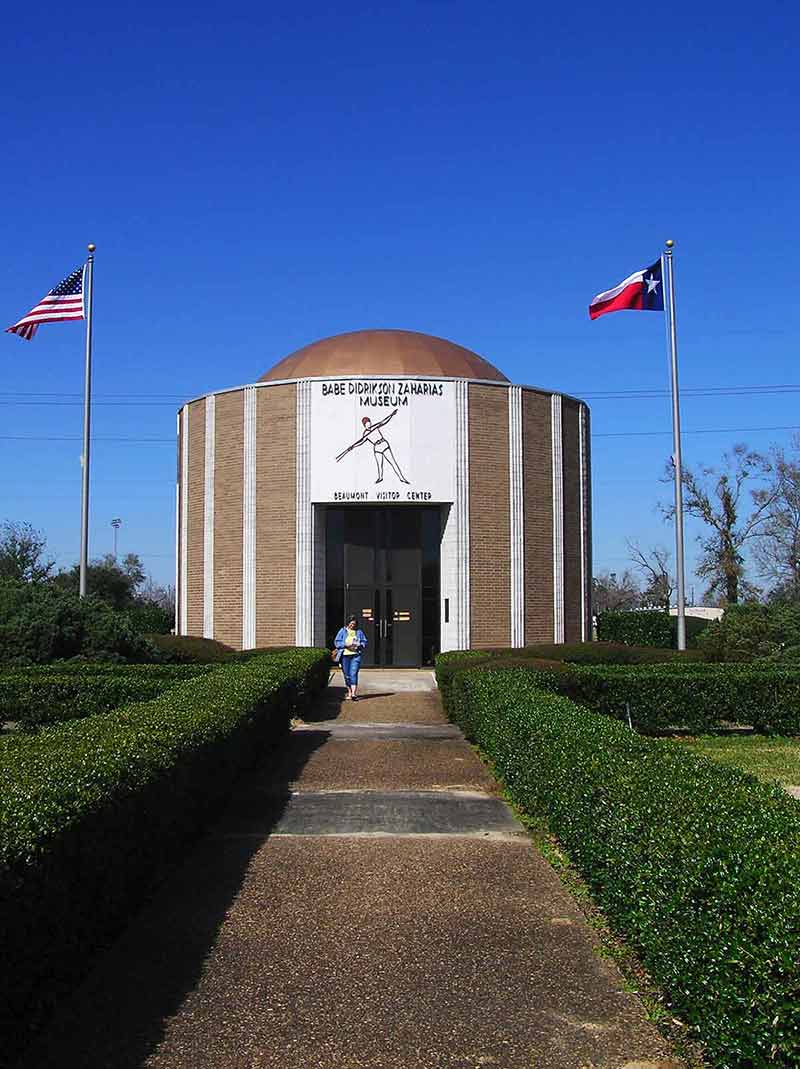
Beaumont is a city close to the Louisiana border which developed in the first half of the 19th Century on the back of farming.
Lumber and industries relating to its port.
For years, rice was its main commodity with associated industries thriving as well.
However, when oil was discovered in 1901, things changed dramatically.
Together with Port Arthur and Orange, Beaumont is part of a major industrial region.
The region’s history is well covered in the city’s museums while the botanical gardens with its conservatory full of orchids is certainly worth a visit.
A fun way to explore Beaumont is to download this scavenger hunt.
Distance from Sea Rim State Park: 46 miles (74 km).
Driving time: 50 minutes
7- Big Thicket National Preserve, Texas
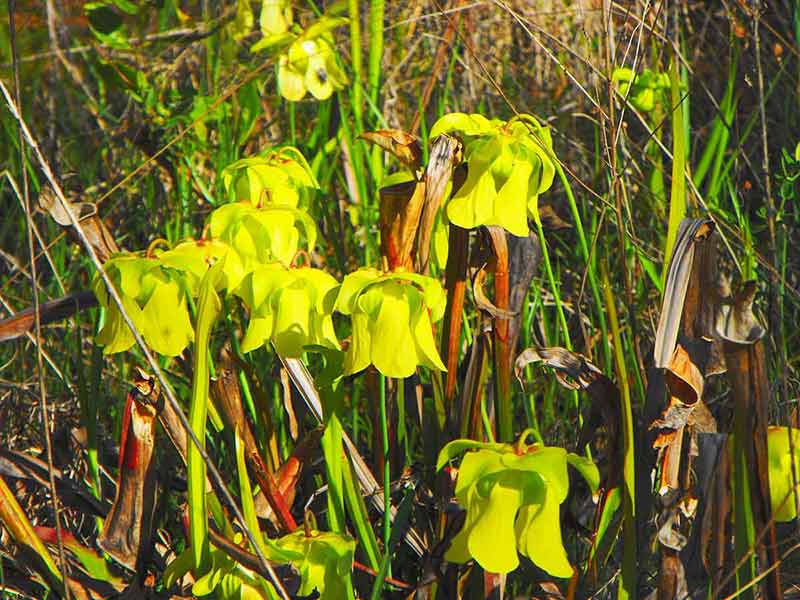
Big Thicket is a slight diversion from your easterly route to the northwest of Beaumont but the diversion is well worth it.
It is a place with a mix of trees, hardwoods as well as pines and it has rightly been recognised by UNESCO as a Biosphere Reserve.
It is rich in wildlife but also in its flora diversity.
Over 160 species of trees and shrubs, 800 herbs and vines, and almost 350 kinds of grasses are found in the Big Thicket.
Add to that more than 1,000 flowering plants, it is easy to see its value to the environment. Native Americans lived here before the arrival of the Spanish in the late 18th century.
Distance from Beaumont: 32 miles (50 kilometres).
Driving time: 40 minutes northwest
8- Lake Charles, Louisiana
This city on the lake of the same name is important as an educational, cultural and industrial centre.
The 1910 Great Fire caused extensive damage so the city needed rebuilding which got impetus via the oil and gas industries.
Hurricane Rita struck in 2005 with further recent hurricanes, Laura and Delta as well as a 2021 tornado proving the area is susceptible to natural disasters.
It has made its name as a gambling city, one where rhythm and blues is popular and where the cuisine deserves close inspection.
Hunting, fishing, golf and numerous festivals mean that there is always something to do here.
Its north beach is one of the few beaches recommended in the whole state.
Perhaps you can use Lake Charles as a base to go off-route to both Sam Houston Jones and Sabine (see below)?
Distance from Big Thicket Big Preserve: 85 miles (137 kilometres).
Driving time: 1 hour 30 minutes east back through Beaumont.
9- Sam Houston Jones State Park, Louisiana
This lovely natural area of 1,087 acres (4.4 square kilometres) has abundant wildlife.
It is an area of forests and lagoons, with over 200 species of birds at certain times of the year.
Water sports are permitted yet not intrusive in terms of nature and fishing is popular.
There are designated hiking trails with the old stagecoach road among them.
Fauna regularly seen are deer, squirrel, fox, racoon, bobcat, alligator, otter, and nutria.
Anyone wanting to stay overnight can book a cabin while camping facilities are within the park.
Distance from Lake Charles: 10 miles (16 kilometres).
Driving time: 20 minutes north
10- Sabine National Wildlife Refuge, Louisiana
Sabine National Wildlife Refuge is a diverse habitat near Cameron Parish of marshes, levees, canals, lakes and bayous.
Its aim is conservation with waterfowl and migratory birds featuring strongly.
There are also several species of fish and crustaceans, reptiles and amphibians. You may well see alligators here as well.
There is auto access to many recreational facilities with road signs explaining what you cannot do and what is not acceptable.
The US Fish and Wildlife Service runs the refuge and provides opportunities for student and volunteer programmes.
Distance from Sam Houston Jones State Park: 45 miles (72 kilometres).
Driving time: 1 hour south back through Lake Charles, then east and south
Also read:
- 20 Landmarks in Louisiana
- 20 Beaches in Louisiana
- 20 Cities in Louisiana
- 6 Louisiana National Parks
- New Orleans At Night
- 20 Museums in New Orleans
- New Orleans French Quarter
- Ultimate Swamp Tour
- 20 Things To Do In Baton Rouge
- 20 Things To Do In New Orleans
- Where To Stay In New Orleans
- 20 State Parks in Louisiana
- 15 Things Louisiana Is Famous For
11- Lafayette, Louisiana
Lafayette on the Vermilion River originally developed because of local agricultural production before the development of entertainment and retail industries.
Oil followed in the 1940s and that stimulated the growth that was seen subsequently.
The population of the greater metropolitan area is now approaching half a million.
The local cuisine is a delight and indeed tabasco sauce originates from the city.
Apart from the many activities in the immediate area, downtown offers plenty of life, bars and restaurants, museums and galleries.
This is the heart of Cajun territory and you will learn plenty about Cajun history in Lafayette.
Join a Cajun food bus tour for a tasty time.
Distance from Sabine National Wildlife Refuge: 100 miles (160 kilometres).
Driving time: 1 hour and 30 minutes back through Lake Charles then east.
12- Rockefeller Wildlife Refuge, Louisiana
This refuge is another diversion from the route heading east to New Orleans but it is certainly worth some time when there is little pressure to reach your final destination.
It comprises marshland that is a great place for migratory birds.
Alligator farming helps to create income to support the refuge.
It opened early in the 20th Century with a view to preserving the environment for waterfowl particularly.
Its southern boundary is the Gulf of Mexico incidentally.
The revenue that sustains the refuge includes fur pellets, alligators and oil which is found underground but which will not ever see above-ground intrusive development.
Distance from Lafayette: 73 miles (117 kilometres).
Driving time: 1 hour 30 minutes south then west.
13- Atchafalaya National Wildlife Refuge, Louisiana
The Atchafalaya National Wildlife Refuge, 30 miles (48 kilometres) to the southwest of Baton Rouge was founded in its present form just over 30 years ago.
It is an extremely important place for birds, both resident and migratory.
Species include woodcock, bald eagles, ospreys, kites and wood duck.
In addition, mammals include black bear, deer, coyote, fox and opossum.
The refuge covers 1.5 million acres (6,100 square kilometres) of swamp, bayou and lake. Fish thrive as well with catfish, bass, and sunfish among over 80 species living here.
There is some commercial fishing with crayfish, one of its sources of income.
Distance from Rockefeller Wildlife Refuge: 107 miles (172 kilometres).
Driving time: 2 hours 20 minutes northwest.
14- Baton Rouge, Louisiana

Baton Rouge is Louisiana’s capital, with a city population of around 230,000 though the metropolitan region exceeds 800,000.
Historically, its importance was strategic, a bluff upriver from the Mississippi Delta.
With France, Spain and England’s former “masters”, Baton Rouge was always multicultural.
That has led to today’s liberal city, where tolerance of minorities thrives.
Its economy includes technology, petrochemicals, medicine and motion pictures, with educational institutions prominent in city life.
Shipping is important, with boats able to get this far inland.
A fun way to explore Baton Rouge is on a scavenger hunt.
Distance from Atchafalaya National Wildlife Refuge: 30 miles (48 kilometres).
Driving time: 40 minutes northeast.
15- Gonzales, Louisiana
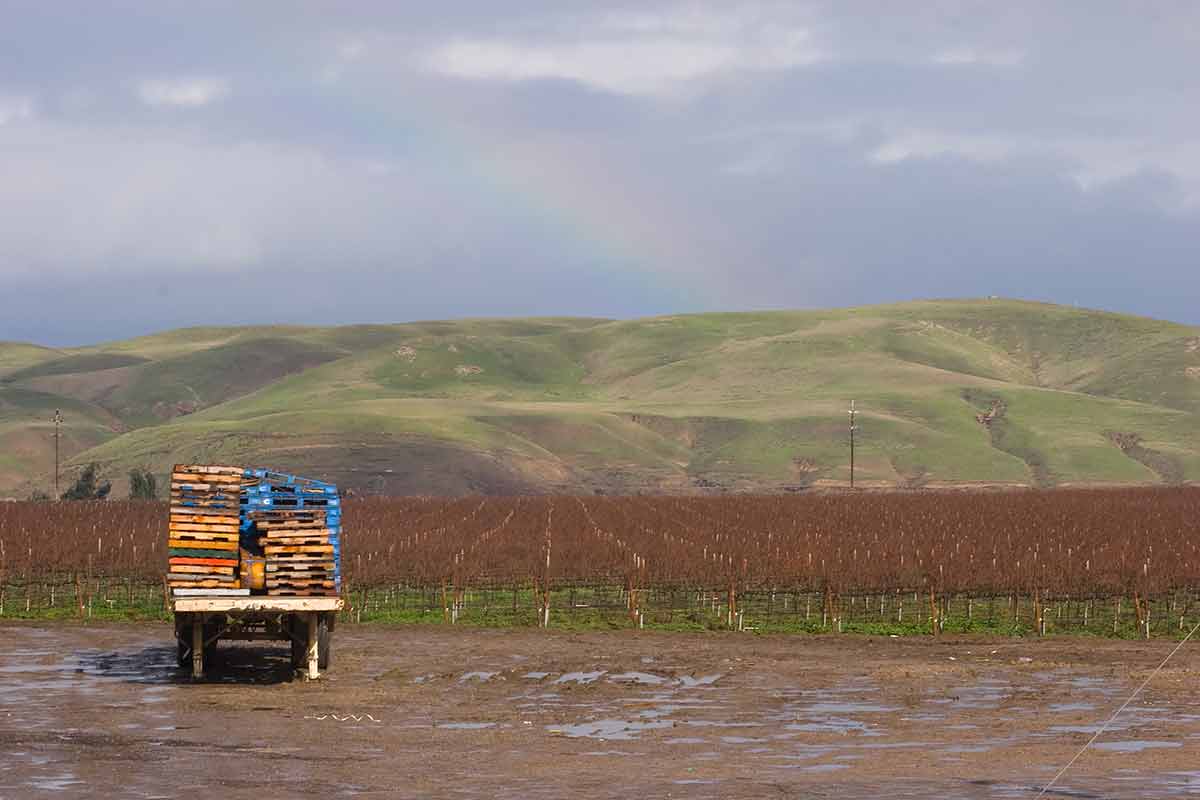
This small city deserves its title, “Jambalaya Capital of the World.”
The annual Jambalaya Festival was first held in 1968.
It was the French and Spanish who first came here in the 18th Century to mingle with the local Native Americans.
It grew from small beginnings when the railroad was built but was not even announced as a town until the 1950s then a city in 1977.
The population is still only around 12,000 incidentally. Hurricane Katrina hit the city in 2005 yet it was a base to direct lifesaving operations for the whole area, both people and wildlife.
Before you pass through Gonzales, you must try the Jambalaya of course.
Distance from Baton Rouge: 20 miles (33 kilometres).
Driving time: 30 minutes southeast.
16- Oak Alley Plantation, Louisiana
This historic plantation on the west bank of the Mississippi gets its name from the alley of oak trees stretching for 800 feet (240 m) planted in the 18th century.
This National Historic Landmark was created to grow sugar cane yet it also became a place for pecans after the technique for grafting was perfected.
With the abolition of slavery after the Civil War, it was no longer viable.
That led to a change of ownership and attempts to make it profitable.
It has even been a cattle ranch but for the last half-century, it has been open to the public, mansion and grounds, as an important part of local history.
The Swamp Boat Ride and Oak Alley Plantation Tour is a great combination for a day of exploring.
Distance from Gonzales: 30 miles (48 kilometres).
Driving time: 40 minutes southeast then a little west.
17- Fontainebleau State Park, Louisiana
Fontainebleau State Park is Lake Pontchartrain’s northern shore.
Once again, it is crucial for its birdlife.
The land was once important for sugar production until the mid-19th century.
On three sides it is surrounded by the waters of the lake and two bayous – Cane and Castin.
The park became an entry into the National Register of Historic Places in 1999.
You can stay overnight in a well-equipped cabin or camp for yourself.
There are hiking trails, picnic areas and beach and a pier from which you can fish.
Distance from Oak Alley Plantation: 78 miles (125 kilometres).
Driving time: 1 hours 20 minutes northeast across Pontchartrain Causeway
18- Mandeville, Louisiana
This small city on Lake Pontchartrain takes the name of its founder, Bernard Xavier de Marigny de Mandeville, in the mid-19th century.
The family-owned around a third of New Orleans at that time with Mandeville, an agricultural region, a cooler escape for the rich of New Orleans during the summer.
The journey could be made by steamboat with dance halls and pavilions built in Mandeville for entertainment facilities.
Jazz was especially important with many New Orleans stars playing there.
Little Richard began his career in one of them, Dew Drop Social Hall while that and Benevolent Hall are both on the National Register of Historic Places.
Distance from Fontainebleau State Park: 3 miles (5 kilometres).
Driving time: 10 minutes.
19- Mississippi Steamer, New Orleans
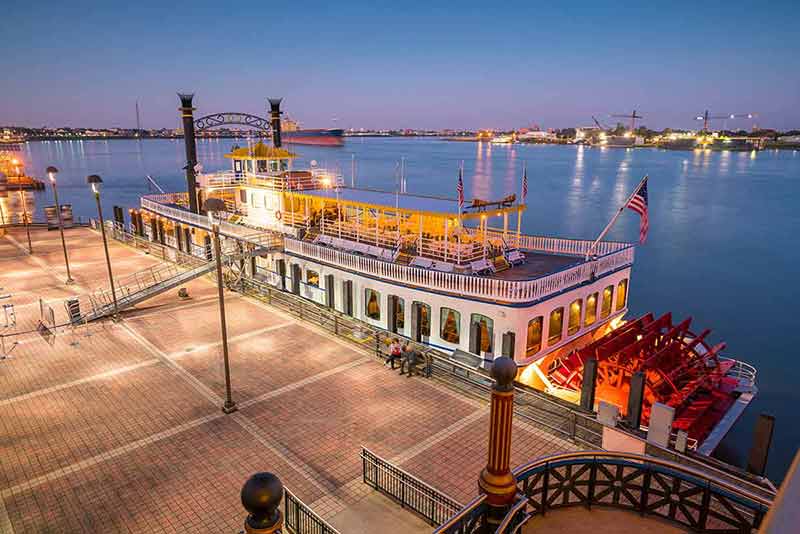
Despite your arrival in New Orleans, you may still be in travelling mode, and if you are, there are numerous paddle ship cruises on the Mississippi before you finally settle.
Some involve music, others dining facilities.
The Steamboat Natchez Evening Jazz Cruise with Dinner Option is one of the most popular.
Distance from Mandeville: 35 miles (56 kilometres).
Driving time: 40 minutes south around the lake
20- Jackson Square, New Orleans
There are plenty of landmarks and highlights to enjoy in New Orleans.
Perhaps the one to reach before enjoying the city is Jackson Square.
Now named after Andre Jackson, 7th President of the USA, it was designed by the French when they occupied the city and it is within what is still known as the French Quarter.
It was here, in 1803, that Louisiana became part of the USA, having previously been both Spanish and French.
One of the best ways to explore New Orleans is on the City Sightseeing Hop-On Hop-Off Bus Tour.
Looking for a road trip? Here are some epic driving vacations.
- Canada Road Trip
- Driving The Icefields Parkway
- Andalucia Road Trip
- Queensland Road Trip
- Argentina Road Trip
- Tasmania Road Trip
- Cambodia Road Trip
- Nashville to Memphis Drive
- Dallas to Austin Drive
- Houston to Miami Road Trip
- Boston to Miami Road Trip
- Boston to Washington DC Road Trip
- Boston to New York Road Trip
- Boston to San Francisco Road Trip
- Boston to Los Angeles Road Trip
- Miami to Atlanta Road Trip
- Las Vegas to Salt Lake City Road Trip
- San Francisco to Los Angeles Road Trip
- San Francisco to Las Vegas Road Trip
- San Diego to San Francisco Road Trip
- Las Vegas to Zion National Park Drive
- San Francisco to Yosemite National Park Drive
- Chicago to Los Angeles Road Trip
- Seattle to Los Angeles Road Trip
- Phoenix to San Francisco Road Trip
- Vancouver to Seattle Road Trip
- Houston to Denver Road Trip
- Montreal to New York Road Trip
- Houston to Los Angeles Road Trip
- New York to San Francisco Road Trip
- Toronto to Vancouver Road Trip
- Houston to New Orleans Road Trip
- Tucson to Phoenix Road Trip
Plan Your Trip

Rent A Car – Find the best car rental rates at Discover Cars. They compare car hire companies to provide you with the best deal right now.

Find A Hotel – If you’re curious about this article and are looking for somewhere to stay, take a look at these amazing hotels.





